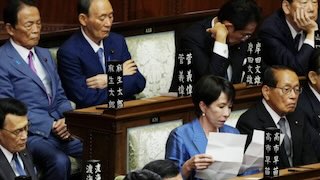May 28 (Nikkei) - The Japanese government plans to allow exports of fighter jets, missiles and other arms to 12 countries, including India, Australia as well as some European and Southeast Asian nations, Nikkei has learned. Regulatory changes to allow for the exports could come by next March.
The government aims to enhance deterrence against China by cooperating with countries that have signed individual security agreements with Tokyo.
These countries include Vietnam, Thailand, Indonesia, Malaysia, the Philippines, U.S., U.K., Germany, France and Italy.
In 2014, Japan established a principle regarding transfers of defense equipment and eased regulations that had prohibited its export. However, it still bans exports of lethal weapons.
The principle states that exports to countries that do not jointly develop arms with Japan are limited to equipment for rescue, transport, warning, surveillance and minesweeping missions.
However, the easing will be included in the government's policy on economic and fiscal management and reform, to be finalized in June. The principles will be revised after a National Security Strategy is formulated, which is scheduled to take place at the end of this year.
Japan is planning to develop new fighter jets and medium-range anti-aircraft missiles with the United States and the United Kingdom.
Export customers will allow Japan's manufacturers to lower their production costs. This will also lower the Japanese government's procurement costs and lighten its financial burden. ...continue reading














